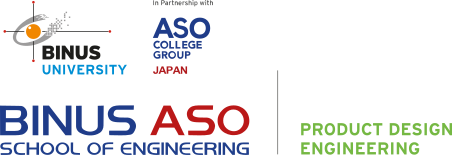Product Design Engineering (PDE) on AI and Digital Twin Technology
Product Design Engineering Program in BINUS ASO School of Engineering (BASE) equips its student with current update in technology and the link with the Industry, in either as Professional and/or Entrepreneur.
Precisely, Product design, ultimately known as Product Design Engineering (PDE) has been revamping swiftly within he past few years. New technologies and tools constitutes enablers for product designers are currently able to generate products faster than ever before. Today's organizations are challenged with finding a balance between design, engineering, manufacturing, operation and craftsmanship of developing products. AI technology has the potential to support engineers as they build cutting edge products without human-made mistakes along the way.
This article elaborate PDE's perspectives on Artificial Intelligence (AI) and Digital Twin Technology. Subsequently, this article is originated from source and adapted from https://www.sorba.ai/blog/the-future-of-product-design-using-ai-and-digital-twin-technology and https://www.youtube.com/watch?v=8t13uQYHeX4
Speed without sacrificing quality
Digital twins are taking center stage—The digital twin is advancing rapidly, going beyond building information modeling to provide asset-centric organizations with immersive visualization and analytics. A digital twin is a digital copy of an actual physical product, process, or ecosystem that can be used to run virtual simulations, using data to update and change the digital copy to reflect any changes in the real world. This digital twin can be used during the design phase to test different simulations or designs before investing in a solid prototype.
This saves time and cost by reducing the number of iterations required to get into production, but also helps improve quality of products because designers have more control over what they build. Allowing digital twins to run virtual tests on new products let us see what might happen if we were to make certain adjustments in real life without having to test potentially expensive changes on the real-world counterpart.

Digital twins are a popular technology that allows us to simulate and tweak environments without disrupting the real world. This ability has made digital twin technology enormously popular in manufacturing settings as it's part of Industry 4.0, which is also called 'the perfect storm' because it encompasses Internet of Things (IoT), robotics, AI and automation among other technologies. Yet experts predict this popularity will expand far beyond the production sector into many different fields including healthcare and military defense by 2025 when their market value is expected to reach $35.8 billion USD worldwide with an increase from 2019's predicted amount already at $3.8 billion USD globally today alone!

Comments :